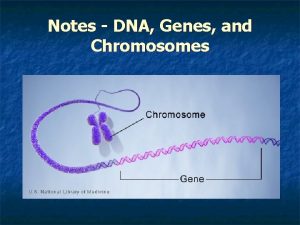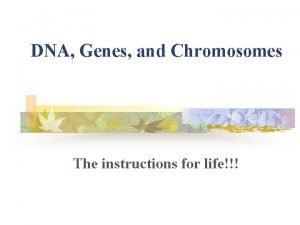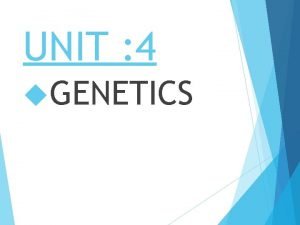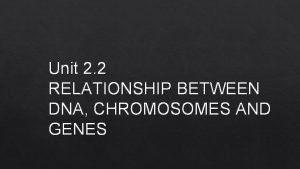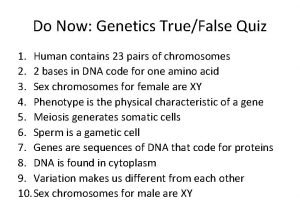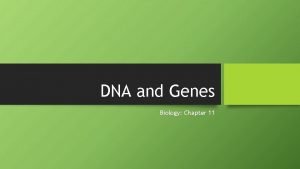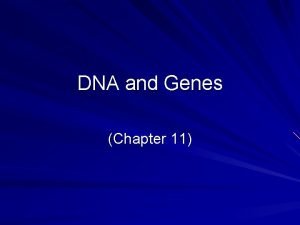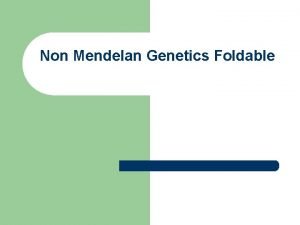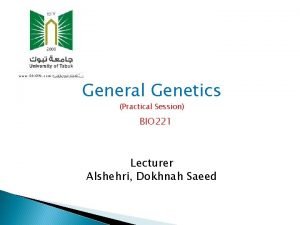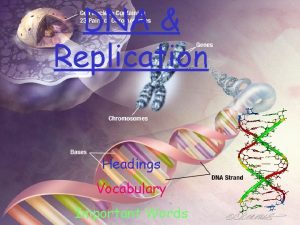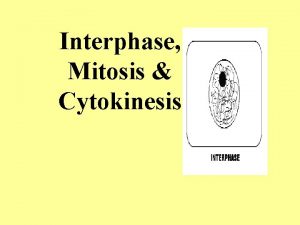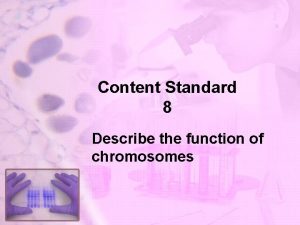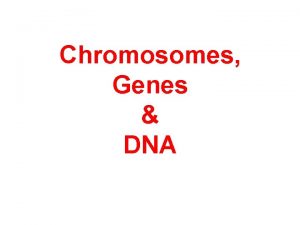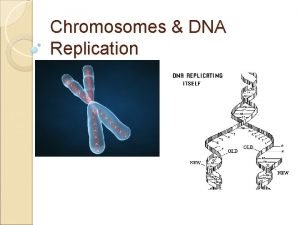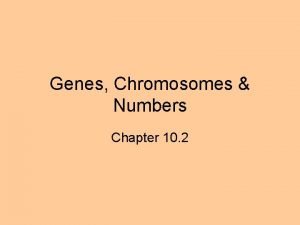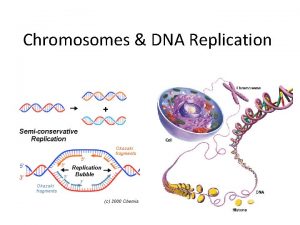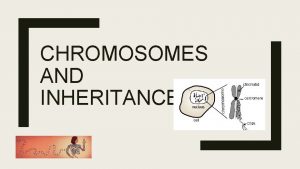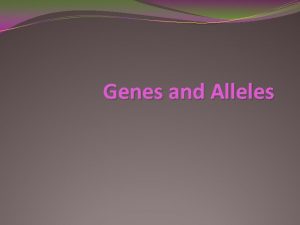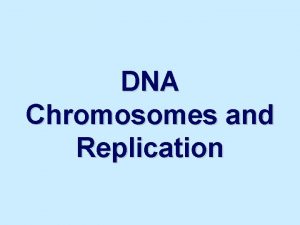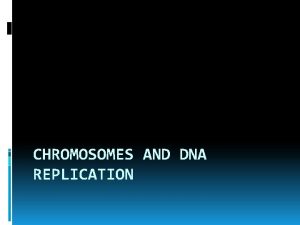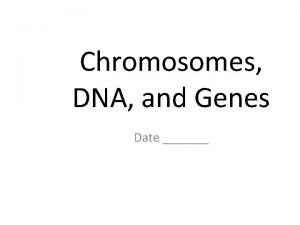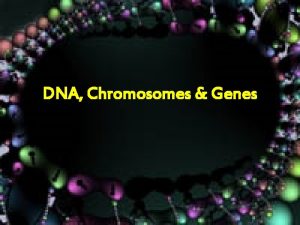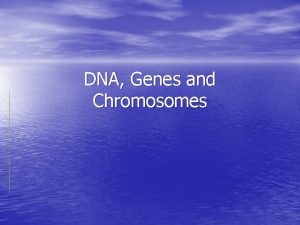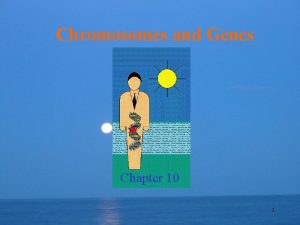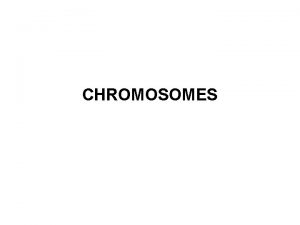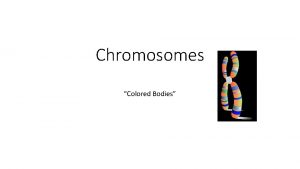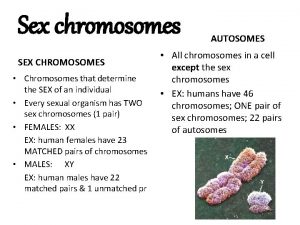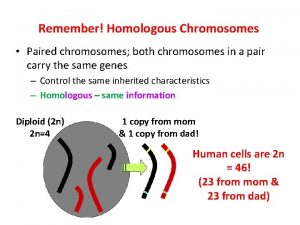Chapter 13 Genes Chromosomes 13 1 DNA The



















- Slides: 19

Chapter 13: Genes & Chromosomes

13. 1 DNA: The Molecule of Heredity • DNA is a nucleic acid – made up of nucleotides – each nucleotide made of sugar, phosphate & base • 4 possible bases – adenine, thymine – cytosine, guanine

Chains of Nucleotides • nucleotides form 2 long chains • joined by hydrogen bonds • DNA looks like a twisted ladder (double helix) • organisms are different because their nucleotides differ in sequence

Replication of DNA • process of copying DNA = replication – enzyme unzips the DNA – free nucleotides bond to each strand, following base pairing rules • A-T, C-G – process continues until whole molecule has been unzipped & replicated – result = two identical DNA molecules

DNA to Protein • the sequence of nitrogen bases along DNA strands code for proteins • order of bases will determine amino acids • m. RNA goes into nucleus, copies message • m. RNA takes info to ribosomes, where proteins are made

13. 3 Genetic Changes • changes in DNA = mutations – can be beneficial or detrimental • point mutation = change in single base pair of DNA THE DOG BIT THE CAT THE DOG BIT THE CAR • This is a substitution – 1 letter (base) changed

• changing single base can change entire protein

• frameshift mutation – single base added or deleted from DNA, shifting all bases THE DOG BIT THE CAT THE OGB ITT HEC AT Deletions and Insertions

Chromosomal Mutations • occur in all living org’s, very common in plants • gametes may end up with extra genes, or be missing some genes • few chromosome mutations passed on to next generation – zygote usually dies – if zygote develops, usually sterile

Chromosomal Mutations – Chromosomal mutations involve changes in the number or structure of chromosomes. – These mutations can change the location of genes on chromosomes and can even change the number of copies of some genes. – There are four types of chromosomal mutations: deletion, duplication, inversion, and translocation.

Chromosomal Mutations – Deletion involves the loss of all or part of a chromosome.

Chromosomal Mutations – Duplication produces an extra copy of all or part of a chromosome.

Chromosomal Mutations – Inversion reverses the direction of parts of a chromosome.

Chromosomal Mutations – Translocation occurs when part of one chromosome breaks off and attaches to another.

Errors in Disjunction • nondisjunction = failure of homologous chrom’s to separate properly during meiosis • trisomy = extra chromosome • triploidy = 3 sets of chromosomes – rare in animals, beneficial in plants • monosomy = missing a chromosome

Examples of Nondisjunction • Klinefelter’s syndrome – male with chromosomes XXY

Nondisjunction Examples • Turner’s syndrome – female with chromosome X only (missing the 2 nd one). – Female should be XX – Male is XY – Individual w/ turner’s syndrome is just X

Causes of Mutations • spontaneous mutations occur randomly • mutations provide variation fundamental to evolution of species • environmental agents can mutations – X rays, UV light, radioactive substances, chemicals

• mutations often result in sterility, lack of normal development • mutations in gametes may birth defects • mutations in body cells may cancer – agents that cause cancer = carcinogens
 Dna, genes and chromosomes relationship
Dna, genes and chromosomes relationship Dna, genes and chromosomes relationship
Dna, genes and chromosomes relationship Genes chromosomes dna
Genes chromosomes dna What is the relationship between dna chromosomes and genes
What is the relationship between dna chromosomes and genes Dna chromosomes genes diagram
Dna chromosomes genes diagram Linked genes and unlinked genes
Linked genes and unlinked genes Genepattern
Genepattern Linked genes and unlinked genes
Linked genes and unlinked genes Chapter 11 dna and genes
Chapter 11 dna and genes Dna and genes chapter 11
Dna and genes chapter 11 Dna rna protein synthesis homework #2 dna replication
Dna rna protein synthesis homework #2 dna replication Genes located on the sex chromosomes
Genes located on the sex chromosomes Genetics foldable
Genetics foldable Dna genes
Dna genes Dna genes
Dna genes Building vocabulary: the nucleus, dna, and chromosomes
Building vocabulary: the nucleus, dna, and chromosomes Interphase to cytokinesis
Interphase to cytokinesis Chromosomes/dna function
Chromosomes/dna function Replication fork
Replication fork Bioflix activity dna replication lagging strand synthesis
Bioflix activity dna replication lagging strand synthesis
